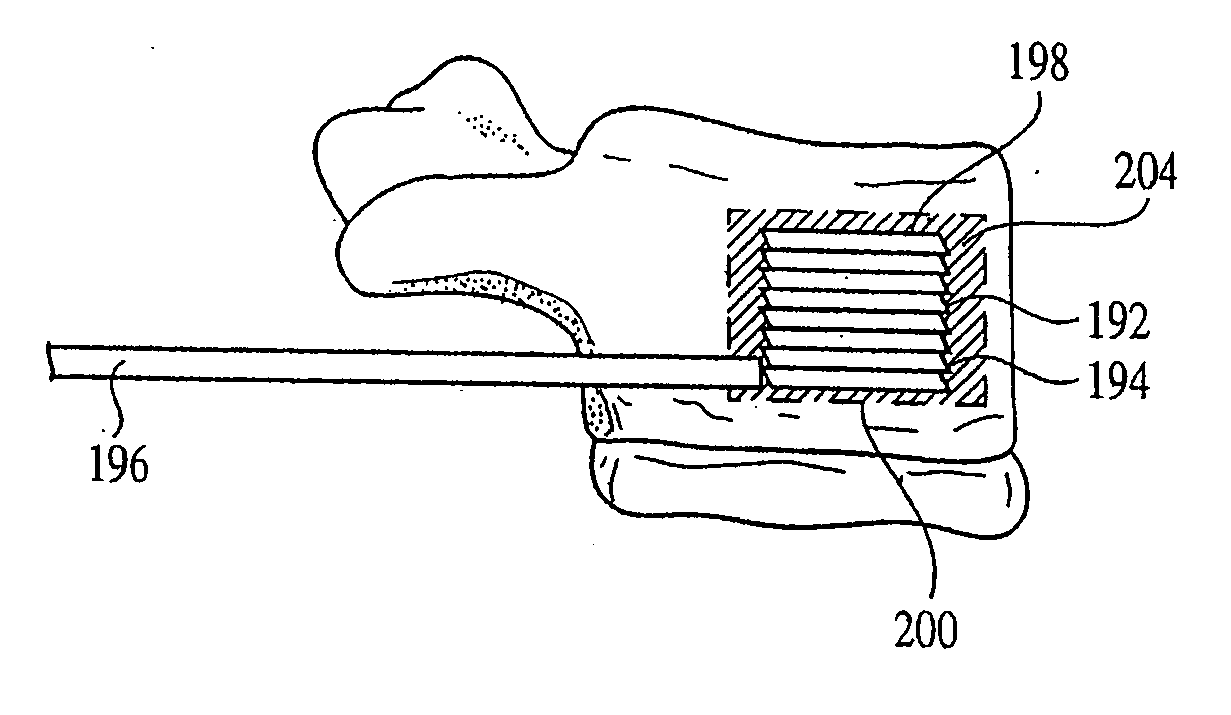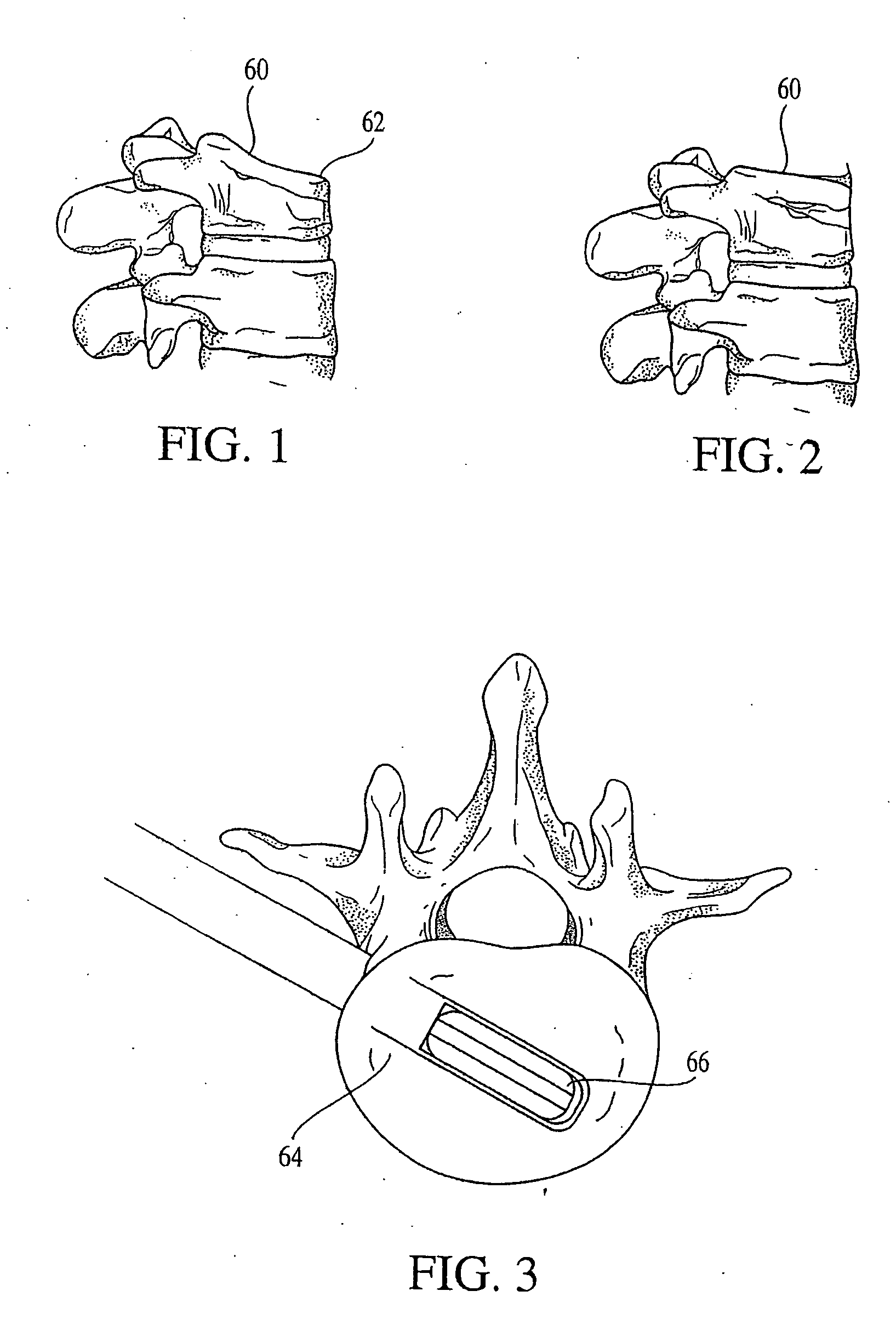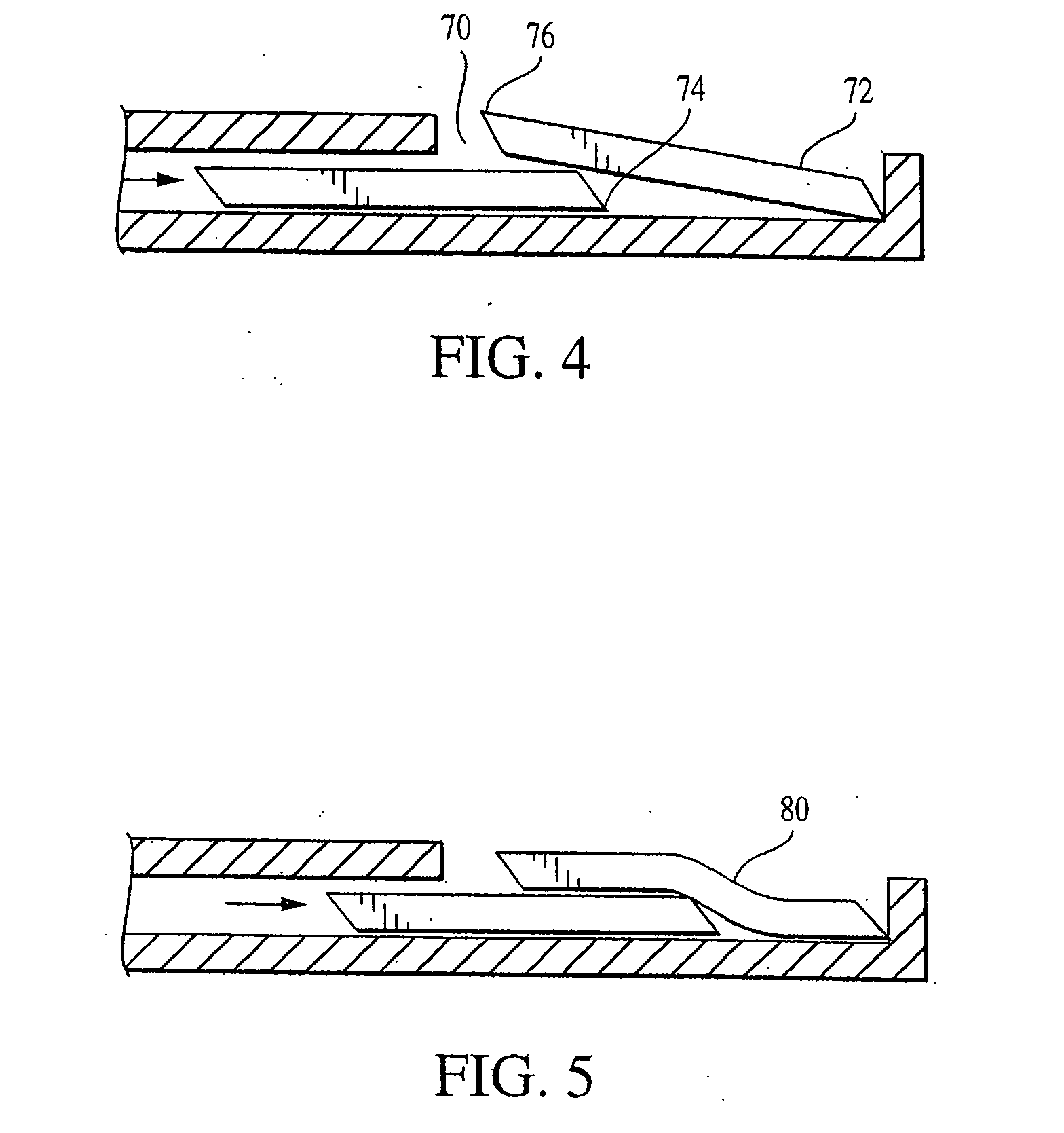Tissue distraction device
a distraction device and tissue technology, applied in the field of surgery, can solve the problems of reducing bone density affecting the encapsulation of wafers, etc., and achieve the effects of stabilizing the distracted tissues, facilitating bone filler flow, and improving encapsulation
- Summary
- Abstract
- Description
- Claims
- Application Information
AI Technical Summary
Benefits of technology
Problems solved by technology
Method used
Image
Examples
Embodiment Construction
[0090] The invention provides a combination of an implantable distraction device and instrumentation to place the device. The distraction device is detailed in this section by its application to the vertebral compression fracture. FIG. 1 shows a vertebral body 60 having a compression fracture displacing its superior and anterior edge 62. FIG. 2 shows a vertebral body 60 wherein the height has been restored.
The Distraction Device
[0091] A plurality of stackable wafers is provided for insertion between two tissues and is delivered to a surgical site along an axis transverse to the axis of distraction. Multiple wafer insertions result in a column of wafers at the surgical site that simultaneously distracts and supports the two tissues.
[0092] The wafers may be formed from a solid form of bone filler material, and / or any other suitable material such as but not limited to implantable grade alloys (including, but not limited to titanium, cobalt chrome, nitinol, or stainless steel), othe...
PUM
| Property | Measurement | Unit |
|---|---|---|
| internal diameter | aaaaa | aaaaa |
| thickness | aaaaa | aaaaa |
| height | aaaaa | aaaaa |
Abstract
Description
Claims
Application Information
 Login to View More
Login to View More - R&D
- Intellectual Property
- Life Sciences
- Materials
- Tech Scout
- Unparalleled Data Quality
- Higher Quality Content
- 60% Fewer Hallucinations
Browse by: Latest US Patents, China's latest patents, Technical Efficacy Thesaurus, Application Domain, Technology Topic, Popular Technical Reports.
© 2025 PatSnap. All rights reserved.Legal|Privacy policy|Modern Slavery Act Transparency Statement|Sitemap|About US| Contact US: help@patsnap.com



